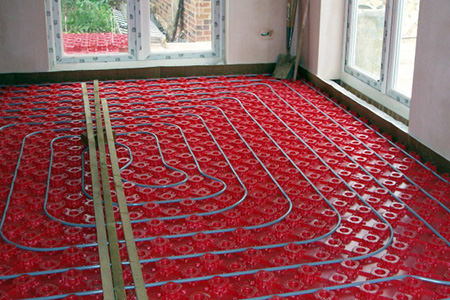
There are no surfaces that become too hot and burn dust as with electric baseboard systems. There is less dust circulating around the house than with forced-air systems. The heating system is essentially invisible. Not having to configure a room for a baseboard radiator or air register gives occupants more flexibility in arranging furniture. This is difficult to permit, though, and it is often a DIY project. There is no airflow through ducts as one would hear from forced-air heating systems, and there is no gurgling and little to no expansion and contraction creaking as one would hear from baseboard radiators.įor hydronic heating, a lower boiler temperature than one would need for baseboard heating increases boiler life and gives the option to use hot water heated by solar energy. A warm floor allows you to more comfortably walk around barefoot. One of the largest selling points is comfort. Here’s a short list of advantages and disadvantages of radiant floor heating: Pros This is ideal for homes that already use a water heater.Īt New Avenue, we’ve incorporated radiant floor heating in many of our projects. Manifold setup allows varied heating of different zones. Hydronic radiant floors – The most popular and cost-effective type of radiant heating, hydronic radiant floor systems pump water heated from a boiler through tubing laid in a pattern under the floor. This is common in bathrooms but can be ideal for a smaller home or for occasional use.


This option is frequently used to retrofit a single room or to add a little luxury.
COST TO ADD RADIANT HEAT FLOORING INSTALL
Electric systems are cheaper to install than hydronic systems, but In the long run it would likely be less expensive to use a different fuel source and go with a hydronic system, which is powered by gas. It is cost-effective when used with flooring of significant thermal mass. They are not cost-effective for residential use.Įlectric radiant floors – This type of heating uses electric cables or electrically conductive plastic mats installed beneath the floor covering. There are three types of radiant floor heating:Īir-heated radiant floors – Air cannot hold a large amount of heat, so this type of system is rarely installed. Other options to heat a home include forced-air heating, baseboard heating, gas burners, electric heating elements, space heaters, and passive solar design. This floor can be “charged” during off-peak hours, when electricity is cheaper, and, if the thermal mass is large enough, it can keep a home comfortable all day without further electrical input. The floor becomes a heated surface that directly warms the home. Radiant floor heating turns your floor into a large-area radiator.


 0 kommentar(er)
0 kommentar(er)
